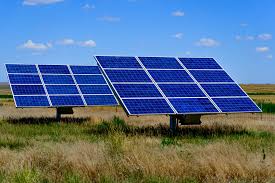By Tsvetana Paraskova
Oil, natural gas, and coal may still be the dominant fuel sources in the world’s energy mix, but renewable energy is growing and creating more and more jobs worldwide.
In 2017, employment in renewable energy globally topped 10 million jobs for the first time ever, the International Renewable Energy Agency (IRENA) said in its latest Renewable Energy and Jobs – Annual Review on Tuesday.
Last year, the renewable energy sector created more than 500,000 new jobs worldwide, and the total number of people working in the clean energy industries increased by 5.3 percent to 10.3 million, driven by strong growth in Asia, and China in particular.
The pace of growth jumped compared to the previous year, when clean energy jobs had increased by 1.1 percent to 9.8 million.
China, Brazil, the United States, India, Germany, and Japan remained the world’s largest renewable energy employers, accounting for more than 70 percent of all industry jobs globally. A total of 60 percent of all renewable energy jobs are in Asia, according to IRENA’s latest report.
China alone accounts for 43 percent of all renewable energy jobs worldwide. China’s share is particularly high in solar heating and cooling at 83 percent, and in the solar photovoltaic (PV) sector at 66 percent, and less so in wind power at 44 percent.
“Fundamentally, this data supports our analysis that decarbonisation of the global energy system can grow the global economy and create up to 28 million jobs in the sector by 2050,” IRENAs’ Director-General Adnan Z. Amin said in a statement.
In terms of technology, the solar photovoltaics (PV) industry was the leading renewable energy employer globally, with the number of jobs rising by 8.7 percent to approach 3.37 million jobs in 2017. Solar PV had a banner year in 2017 with record installations of 94 gigawatts (GW), up from 73 GW in 2016, which also boosted job creation. In solar PV, jobs continue to be concentrated in a small number of countries. The top five countries—led by China—accounted for 90 percent of solar PV jobs worldwide.
Related: Qatar Petroleum To Boost Production Despite Blockade
Employment in biofuels jumped by 12 percent to 1.93 million jobs, as production of ethanol and biodiesel expanded in most of the major producers. Brazil, the United States, the European Union, and Southeast Asian countries were among the largest employers. The leader Brazil alone accounted for 41 percent of biofuel jobs.
In wind energy, global employment dropped by 0.6 percent to 1.15 million jobs, as the growth pace of new capacity additions slowed in 2017, IRENA said. Although China is the leader in this segment as well, with 44 percent of all jobs, the regional picture is a bit more balanced than in solar PV employment. Contrary to the global trend, wind power jobs in the U.S. increased last year by 3 percent to 105,500 jobs.
In the United States, solar and wind are the key renewable energy employers. The latest figures by the Solar Foundation showed that 250,271 Americans worked in solar as of 2017, down by 3.8 percent—or about 9,800 fewer jobs—since 2016, marking the first time that jobs have decreased since the first Solar Jobs Census in 2010.
According to the Solar Energy Industries Association (SEIA), the imposition of a 30-percent tariff on imported solar cells and panels would lead to a loss of 23,000 American jobs in 2018.
That impact, however, could be softened because the first 2.5 GW of solar cells imported annually will be exempted from tariffs, IRENA said in its global employment report on Tuesday.
In U.S. wind, jobs rose as the industry grew by 9 percent to add 7 GW of new wind capacity in 2017, said the American Wind Energy Association (AWEA). Texas—which leads in terms of installed capacity at 22,799 MW—is also leader in wind energy jobs, with more than 24,000 people employed.
Across the U.S., electricity generation from fossil fuels dropped last year, while renewables generation increased, according to the EIA.
Wind and solar continued to raise their share in 2017, with wind at 6.3 percent and utility-scale solar at 1.3 percent of total U.S. net generation—record shares for both. The EIA expects wind to become the predominant renewable electricity generation source in 2019, surpassing hydropower, as it expects significant new wind capacity additions to come online in 2018 and 2019, similar to the trend in recent years. The EIA expects wind to account for 6.4 percent of U.S. utility-scale electricity generation in 2018 and for 6.9 percent in 2019, up from 6.3 percent in 2017.
Source: Oilprice.com







